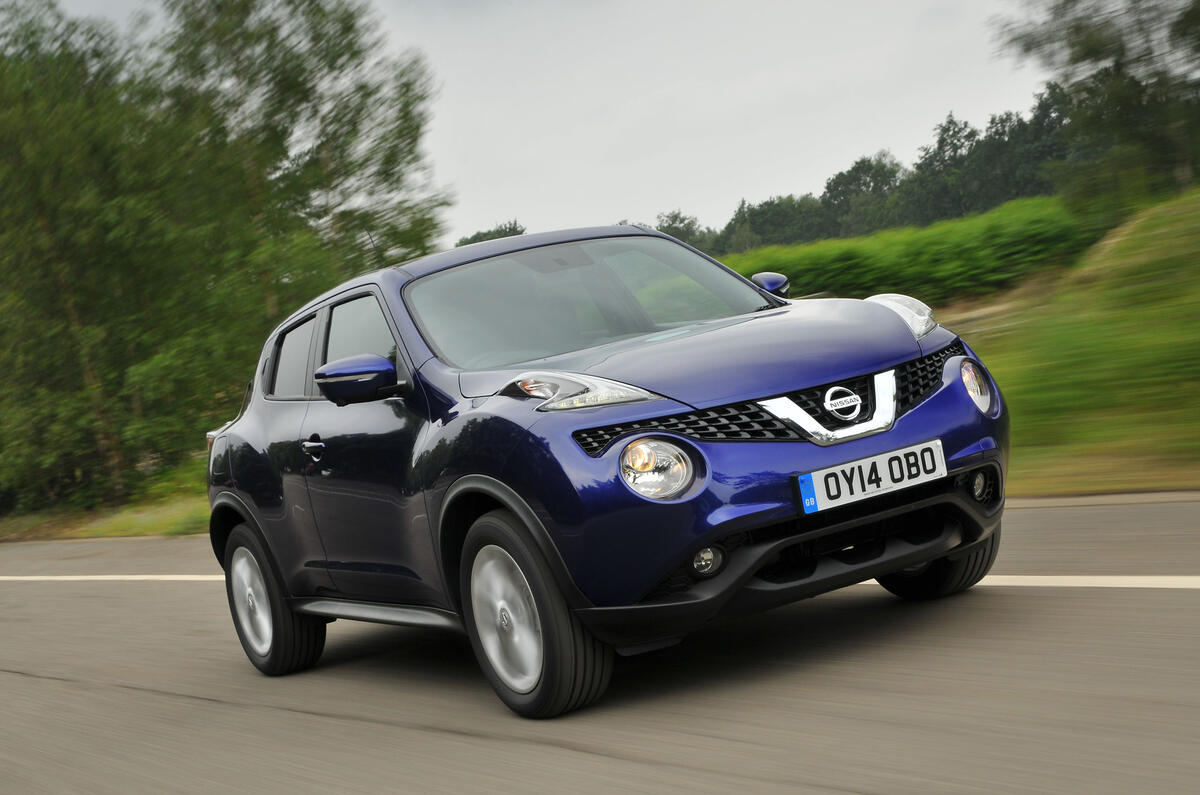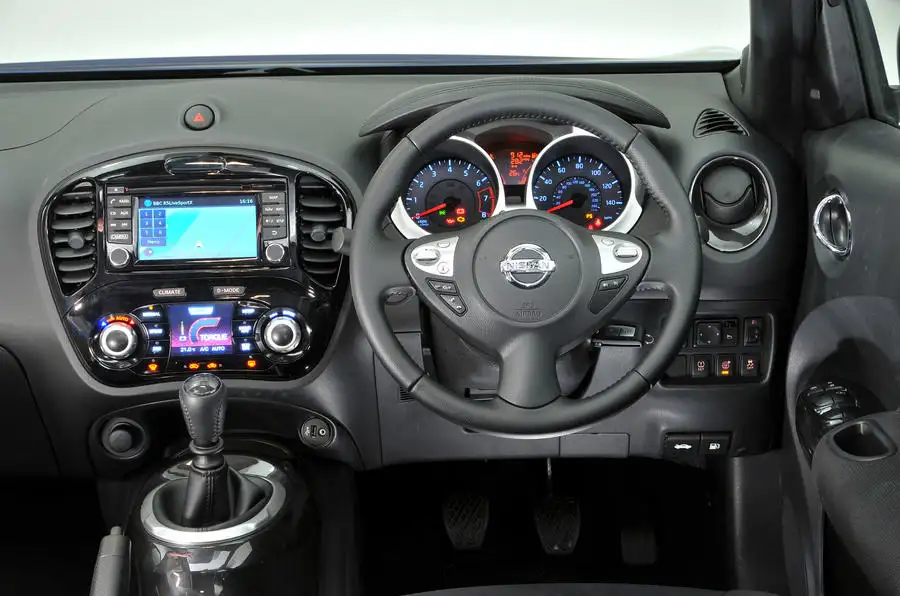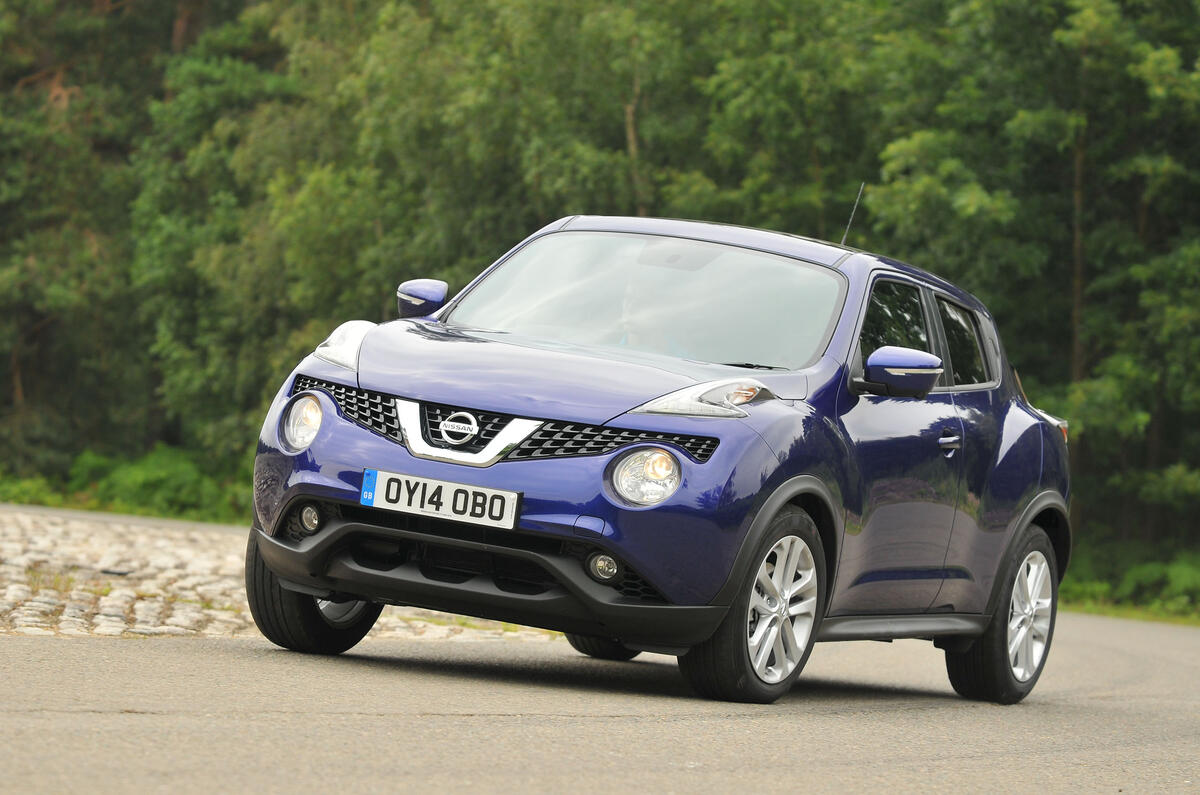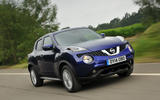A motorcycle inspired interior? Apparently so. The Nissan Juke’s instrument cluster’s two dials seem separate from the dashboard, framed in mock-aluminium with a cowling floating above and joined to the dial cases by two struts. All you need are the handlebars and the rush of wind.
Then there’s the centre tunnel, high and rounded and painted in a glossy silver metallic to look like a motorcycle’s petrol tank. In top Tekna versions, the silver is replaced by body colour.
Lowest-grade Visia gets remote central locking, six airbags, 16in alloy wheels and LED day-running-lights, while air conditioning, all round electric windows and speed sensitive power steering is included in th package. Upgrade to Acenta, and you'll find Bluetooth, a USB port, 17in alloys, front foglights, cruise control and climate control all included, while the N-Connecta comes with a 5.8in touchscreen infotainment system complete with sat nav, reversing camera, auto lights and wipers, and keyless entry are part of the package.
The range-topping Tekna models come with Nissan's Safety Shield Technologies, which includes - blind spot warning, moving object and lane departure detection and around view monitor. There is also a leather upholstery and front heated seats thrown into the package too.
The Nismo RS Juke comes with a few sporty extras including, upgraded brakes, sports suspension, a limited slip differential and numerous Nismo adjustments to the exhaust, aggressive bodykit, rear diffuser, and bucket seats.






































